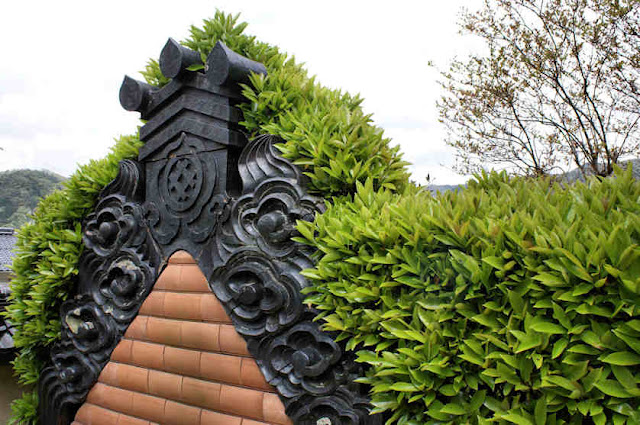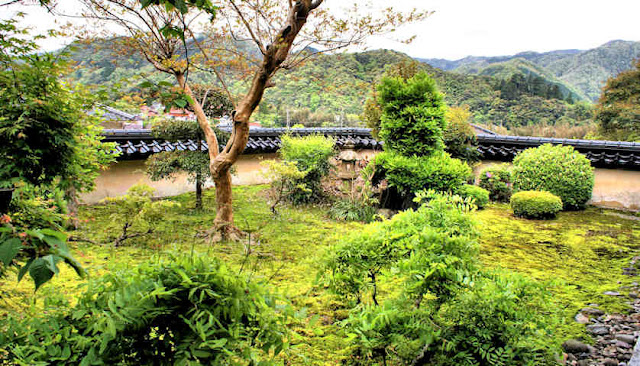Yomeiji is a Soto Zen temple in the former castle town of Tsuwano in the mountains of western Shimane.
It was founded in 1420 and has been the family temple for successive lords of the domain since then.
It has a thatched roof and many "treasures" to be seen, but for now I will concentrate on the garden.
Actually there are two gardens, with the last two photos of this post showing the older garden in front of the main hall.
It, however, can only be seen from a distance, though it is said that in earlier times a corridor surrounded it.
The main garden is to the rear of the priests residence.
It is not known when the garden was created nor who designed it.
The temple was rebuilt in the mid 18th century following a major fire, so it is believed the garden dates from that time.
The main focus is a Turtle Island connected by a bridge in a Koi pond.
A small waterfall runs in the hillside behind.
While the garden can be enjoyed from within the main viewing room, it is actually a stroll garden so can be explored a little.
The temple is located a short walk up a small valley off of the main area of town and is well worth a visit, especially with the Fall foliage.
Entry is only 300 yen and includes access to the temples Treasure House.
The garden is suitable for viewing all year round. These photos were taken over several visits at different times of the year.
In the next post in this series I will show the architecture and art of Yomeiji.
The previous post in this series exploring Tsuwano was on the
Sagimai Heron Dance held every year.














































































